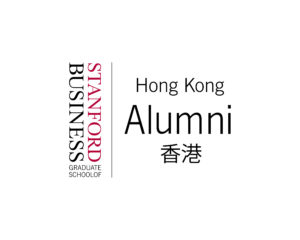Stanford Business Behind the Scenes: West Kowloon Cultural District (WKCD):
Private Site Visit & CEO Discussion
Saturday, 8 December 2018, 09:00 am – 13:00 pm, West Kowloon Cultural District
Hong Kong’s Surprise: How WKCD Could End up Being the Most Successful Art District in the World
Event Details:
The West Kowloon Cultural District (“WKCD”) is remarkable in both scope and ambition. With plans for numerous distinct arts and performance venues set upon 40 hectares of prime real estate, WKCD aspires to nothing less than establishing Hong Kong as Asia’s arts and culture capital on a self-financing, self-sustainable basis. WKCD’s dedicated, purpose-built facilities for music (including traditional Cantonese opera), theatre, dance, and the visual arts promises to address a longstanding cultural infrastructure gap between Hong Kong and its global peers like NYC and London.
That said, it has been twenty years since Tung Chee-hwa first shared his vision for WKCD in his Chief Executive’s Policy Address in 1998.
Yet with the iconic Xiqu Centre now on track for a December 2018 opening and other key venues slated for launch over the next 3-4 years, WKCD is finally opening. Much has been written about WKCD’s museum for visual culture, M+ (launching 2020), which will rival New York’s MOMA in scale, as well as the Hong Kong Jockey Club-funded Palace Museum (launching 2022). Once fully built up, these two facilities, the aforementioned Xiqu Centre, and numerous other venues including Freespace, Lyric Theatre and Dancehouse, and the Music Centre including concert hall, together, will represent a gross floor area for cultural facilities of around 340,000 square meters – easily one of the most expansive arts-focused developments in the world.
Less well understood is the WKCD’s mandate to develop a further gross floor area of around 500,000 square meters for mixed-used commercial (hotels, offices, retail, dining, and entertainment) and residential purposes – roughly equal in size to Pacific Place (with four hotels and three office towers).
To do so, the WKCD will enter into joint-ventures with developers under a build-operate-transfer (“BOT”) model, with a share of revenue from hotels, offices, and residential buildings accruing directly to the WKCD Authority for funding the cultural facilities. With the new Guangzhou-Shenzhen-Hong Kong Express Rail Link already operating since September, the implications are staggering.
What is the best way to nurture this complex ecosystem? How should the needs of the various stakeholders be prioritized? How to strike a balance between catering to local Hong Kong residents vs. audiences from the Mainland and worldwide? What are the opportunities and pitfalls of the build-operate-transfer model? What is the right approach to near-to-mid-term funding needs?
As part of the Chapter’s mission of life-long learning, the Behind the Scenes Program was initiated to give our Membership rare insights on how leading organizations operate from the inside, combining on-site tours with the opportunity for engaged, off-the-record dialogue with senior management. The WKCD Behind the Scenes event will cover not only off-the-record discussion with management, but also feature an exclusive preview inside the Xiqu Centre ahead of its official opening and a tour of the site, enabling one to grasp the scale and challenge of the endeavor.
We look forward to welcoming you to this very special Behind the Scenes event.
| Time: | 09:00 Opening Welcome by WKCD CEO, Duncan Pescod, GBS, JP 09:30 VIP Preview Tour of the Xiqu Centre (a contemporary gateway to an ancient art form) 10:40 Walking tour of WKCD grounds (including M+ Pavilion, Art Park, Waterfront Promenade, and around Freespace, Hong Kong’s new centre for contemporary performance) – Understanding the scale of the WKCD development – Photo sessions 11:30 WKCD Operating Model Overview, Discussion & Box Lunch – Vision for WKCD – Development Rights and Build-Operate-Transfer Approach – Overview of Commercial Opportunities – Funding WKCD 13:00 Program Conclusion (and group transportation back to Kowloon MTR) |
